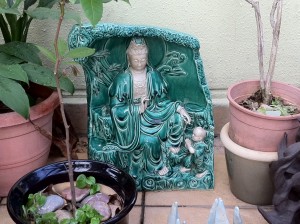 Whenever we engage in meditation or any other activity that promotes greater self awareness, we automatically begin to activate two innate capacities within our mind: Its capacity for self-healing and its capacity for self-evolving.
Whenever we engage in meditation or any other activity that promotes greater self awareness, we automatically begin to activate two innate capacities within our mind: Its capacity for self-healing and its capacity for self-evolving.
The minds capacity for self-healing is basically means that, whenever we move into a meditative state, the process of being aware of our mind, whether it I in a state of bliss or pain (or somewhere in between) has a beneficial healing effect upon our mind. Awareness heals.
The minds capacity for self-evolving means that the process of sitting and being alert and aware in meditation brings to the surface of our mind all the latent higher qualities and talents that we might not be aware of or, may even be afraid of.
Meditation makes you more aware of your creative gifts and talents and will over time create an energy in you that actually DEMANDS that you start expressing these talents in your life.
From this we can see that, as well as bringing you greater peace of mind, meditation can also be quite challenging in the sense that:
- You become more aware of all that is damaged and that needs healing within you
- You start having a lot of creative urges that start to PULL you toward higher and greater achievement in your life.
If you are not prepared for these side effects they can actually be a bit shocking, and you might even feel that you may be doing something wrong. Actually as often as not it is just your minds capacity for auto-healing and auto-evolving kicking in!
So, although the minds capacity for self-healing and self-evolving are good things they also challenge us, bringing us face to face with the two aspects of our shadow self:
- The DARK part of our shadow self; the damaged part of self which we have disowned and rejected, and
- The LIGHT part of our shadow self; that latent greatness and talent within us that is as yet unknown and unexpressed.
With this in mind here are six tips for starting to get friendly with your shadow self. They are the basic elements of what I call a “Six point shadow reclamation process” that I use with coaching clients, and teach in Integral meditation Asia classes and workshops.
Step 1:
See it – Pay close attention to both strong positive and negative emotions that get triggered in you by people, events, places or things. Be alert to the meaning that there is in the fact that your mind has been triggered in this way.
Step 2:
Feel it – Rather than immediately repressing or pushing away the strong emotions, thoughts or images that get triggered in your mind, get used to feeling into them, holding them within your conscious awareness
Step 3:
Communicate with it – Once you have some experience of steps 1&2, you can then try inwardly communicating with the person or thing that is triggering the shadow emotion. For example if a person fills you with revulsion, try visualizing them in front of you and asking “what is it about you that is creating such strong feelings of dislike?” – see what answer comes back. (Please note you are not actually communicating with the physical person, but trying to connect to that part of yourself that has been triggered!)
Step 4:
BE it – Practice mentally imagining that you have become the person that you fear or admire. Become that angry person that you run away from all the time, imagine yourself AS that great public speaker that fills you with so much admiration.
Step 5:
Own it – Practice taking responsibility for your shadow self and emotions, the light and the dark:
-“Yes I really am angry and hurt deep down, it is not always the other person that is angry”
– “It’s my job to make the most of this talent, no one else is going to do it for me!”
Step 6:
Transcend and transform it – This is the final step, and needs to be done at the END of the other 5 steps. A BIG mistake people make is to try and transcend their shadow self too soon, before they have properly seen it, felt it, communicated with it, been it and owned it.
To transcend and transform the shadow self simply means to recognize it is NOT your true or ultimate self, but nevertheless it has a potential place and function within your everyday personality of ego self. For example:
- Your previous fear of anger and projection of it onto others can be transformed into the ability to be powerful and polite with difficult people
- Your previous admiration of another person’s public speaking skills is transformed into your ownership of that talent within yourself, and the development of your own talent as a passionate and persuasive speaker.
If you simply think about the above six points, and start to try them out in your daily life, I think you will find that you can start to get a feel for this process.
Here’s to the maximization of our minds capacity for self-healing and self-evolving!
© Toby Ouvry 2011, you are welcome to use or share this article, but please cite Toby as the source and include reference to his website www.tobyouvry.com


 Article of the Week:
Article of the Week:
 Article of the Week:
Article of the Week:



